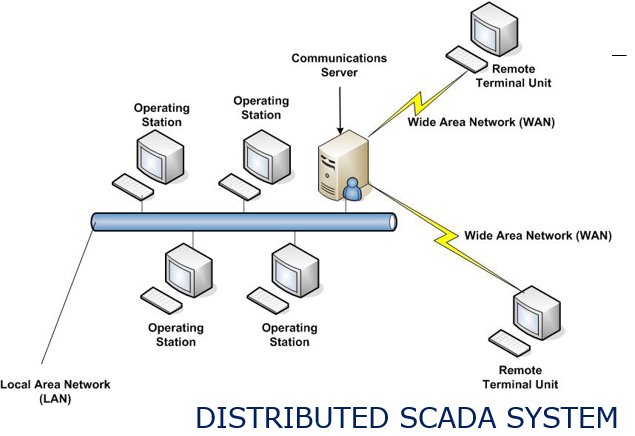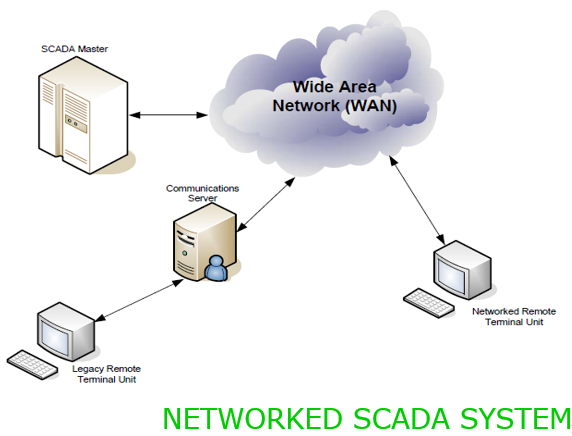Here we discuss about different types of SCADA Architectures used in oil and gas industries.
SCADA Architectures
Monolithic: The First Generation
In the first generation, mainframe systems were used for computing. At the time SCADA was developed, networks did not exist. Therefore, the SCADA systems did not have any connectivity to other systems, meaning they were independent systems.

Later on, RTU vendors designed the Wide Area Networks that helped in communication with RTU. The usage of communication protocols at that time was proprietary. If the mainframe system failed, there was a back-up mainframe, connected at the bus level.
Distributed: The Second Generation
The information between multiple stations was shared in real time through LAN and the processing was distributed between various multiple stations. The cost and size of the stations were reduced in comparison to the ones used in the first generation.

The protocols used for the networks were still proprietary, which caused many security issues for SCADA systems. Due to the proprietary nature of the protocols, very few people actually knew how secure the SCADA installation was.
Networked: The Third Generation
The SCADA system used today belong to this generation. The communication between the system and the master station is done through the WAN protocols like the Internet Protocols (IP).

Since the standard protocols used and the networked SCADA systems can be accessed through the internet, the vulnerability of the system is increased.
However, the usage of security techniques and standard protocols means that security improvements can be applied in SCADA systems.